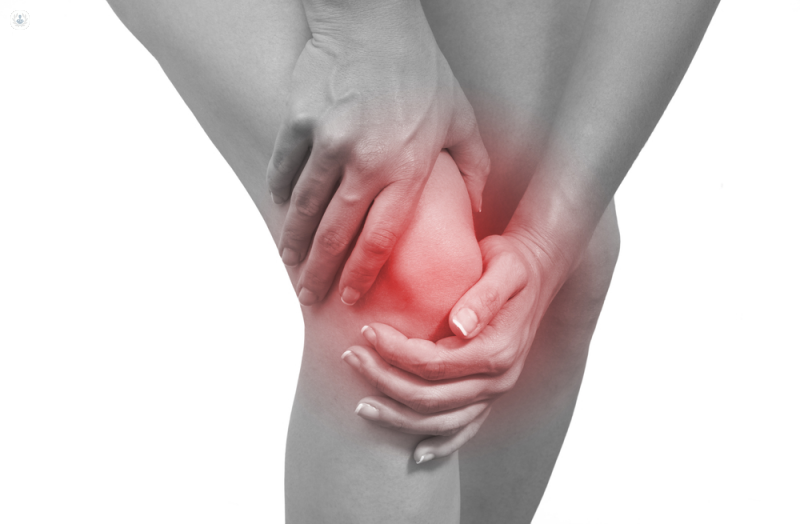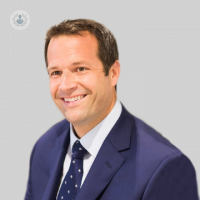What range of motion should I be getting after my knee replacement?
Written in association with:If you’re having a total or partial knee replacement – or considering one – you may have heard a lot of talk about “degrees of flexion”. Or something called “range of motion”. Or perhaps even the acronym “ROM”.
So, what exactly are these terms and why are they so relevant to your recovery after knee replacement surgery? In our latest article, revered orthopaedic surgeon, Mr Christopher Arthur Bailey, explains what exactly flexion is and how having a knee replacement can affect it.

What are flexion and ROM?
Flexion just means the bend you can achieve in your leg. If you straighten your leg fully, you’re at what doctors call “zero degrees of flexion (/ extension)”. As you bend your knee, the angle increases. The number of degrees you can achieve is your range of motion (ROM).
What is the normal range of motion for a knee?
In normal circumstances, you should be able to fully straighten your leg (0°). To walk, our legs need about 60° flexion. To sit down comfortably, we need at least 90°. Sitting cross-legged requires about 120°. Most people can achieve up to about 145°. Many knee replacement patients won’t be getting the full range of motion (ROM), and that may well be one of the reasons you’re having the operation.
How does knee replacement affect flexion?
Knee flexion is a key focus of knee replacement procedures. We check it when placing the implant during the operation, and your care team will be reviewing it regularly as you recover in hospital. They’ll monitor both your active range of motion (how far you can flex your leg on your own) and your passive range of motion (how far they can help you to move it). Swelling from the operation will obviously reduce your flexion to begin with, but in the days and weeks to come, we will want it to increase significantly.
Is it true that I’ll need 90° flexion before I can leave hospital?
In the past, it’s true that doctors often felt patients should be achieving 90° flexion before they could go home – which could be a bit of a worry for people, because it might take a week or more to reach that milestone. Today, we recognise people recover at different rates. So, as long as you’re getting flexion in hospital and it’s showing signs of improvement, you’ll be able to continue your recovery at home.
How much flexion should I achieve while I’m in hospital?
Everyone’s different, so it very much depends on your own situation. A typical case might be 50-60° on day one, 60-70° on day two, and 80-90° on day three. However, there’s no need to panic if you don’t follow this pattern.
What can I do to improve my flexion?
The key thing is to keep your new knee mobile from the start. Your physiotherapy team will be helping you with this. They’ll take you through some ROM exercises in hospital and encourage you to keep doing them regularly at home. One reason is that scar tissue that forms after the operation can cause the new joint to stiffen up. Therefore, it’s important to work on your flexion from the beginning.
What range of motion should I be hoping for in the long term?
As we’ve noted, every patient is different and everyone recovers in a different way. However, although there are no guarantees, in the long term, many people are able to achieve 125 degrees of flexion, and some upwards of that.
What happens if I can’t get enough flexion in my new knee?
While the great majority of people improve their ROM after joint replacement, some patients occasionally struggle with their flexion. If this does happen, there are things we can do to help. One option is a keyhole operation to remove scar tissue around the implant, to free up the joint. In most cases, however, physiotherapy support, exercise and time are the best routes to a comfortable, flexible knee following replacement surgery.
If you are considering undergoing a knee replacement operation and would like to find out more beforehand, you can consult directly with Mr Christopher Arthur Bailey himself by visiting his Top Doctors profile today.


